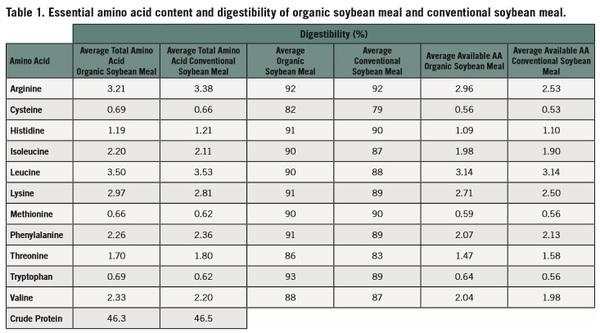Amino Acid Content in Organic Soybean Meal for the Formulation of Organic Poultry Feed





As Martin Smith pointed out, digestibility of soybean meal is more a function of processing due to variance in the heating used for solvent removal. Unless the comparison is made between beans of the same variety grown in the same geographical region under similar soil types and processed under the same conditions, any comparison of conventional and organic soybeans is invalid. I wish some people had taken a course in experimental design, we would not have so much invalid information running around.

There is a difference in crude protein levels of soybeans grown in different latitude in the US as different varieties have been developed by agrinomists for particular regions. I have not seen the particular data regarding conventional vs organic but unless you are comparing beans grown in same geographical area...and beans of the same genetic stock...you are already in error


is there any evidence that would suggest a difference in amino acid content? If it exists, I would certainly look at sample size.
I agree that protein content of soybeans may vary depending on variety, fertilization level, degree of maturation of the grain and some other environmental conditions. However, the proportion of the different amino-acids in the protein will not be different between the conventional and organic organic. The only way the same variety of soybean grown conventionally or under the "so called" organic conditions is if there is a change in the DNA structure of the protein of the variety. Science proves that it is true.









.jpg&w=3840&q=75)




